Below are listed the books that Diederik Burgersdijk has written, edited or co-edited. A complete list of his works can be found here.
Publications
Filter by type:

Gymnasium. Geschiedenis van een eliteschool.
This is a good book.
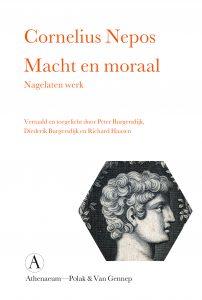
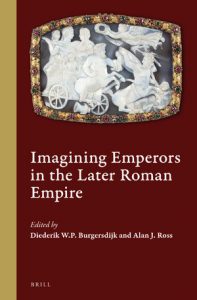
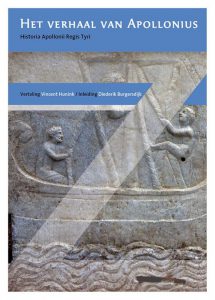
The story of King Apollonius is the fictive tale of the Syrian king Apollonius, from the city of Tyrus, who experiences the most unbelievable adventures on his journeys through the eastern part of the Mediterranean – from Egypt to Asia Minor. The stories depict simultaneously deep human emotions concerning hatred, exile, insecurity, and forbidden loves. The striking mix of classical and christian motives makes the reading particularly enjoyable, having both a recognizing as an estranging effect. The story is a novel originating from late classical antiquity, written in Latin, which goes back on a Greek original from the Hellenistic period. The novel can now be read in a new and contemporary translation, supported by an introduction that familiarizes the reader with a time and period that is not ours, but offers us, just because of that, even more material to enjoy and reflect on.

De sluipwesp en de leliën. Geloof en ongeloof in de klassieken
In De sluipwesp en de leliën, Diederik Burgersdijk shows us how the classical and christian tradition became entangled during the first four centuries of our era. In the past two centuries, they have slowly drifted apart again, framed in the institutes of the Gymnasium and the Church. Burgersdijk studies the interaction with classical texts from Seneca, in the first century BC, onward through many authors in European Literature up to our own time. The result is a fascinating palette of viewpoints, concerning the value of classical heritage with the central question: should we believe what we read? Burgersdijk will give you an answer.
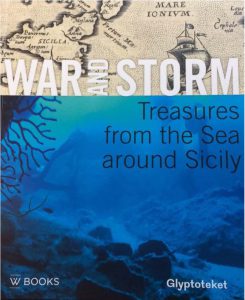
Sicily. Island of myths and monsters, meeting place of cultures, hub of naval trade routes, source of artistic inspiration and of great material wealth, and much-coveted strategic location in the Mediterranean. Phoenician and Greek colonists were the first outsiders to settle on Sicily and enjoy the riches that the sea and the fertile soil brought them. They were followed by a bewildering variety of invaders over the ages: from Romans to Byzantines through Arabs and various European dynasties up to the Allies during the Second World War. All these cultures – sometimes living in peace, sometimes at war, always influencing each other – left their traces on the Island itself and in the sea surrounding it. Inspired by Sicily’s archaeological and cultural treasures, this book offers an overview – or perhaps rather an anthology, since a complete survey, if at all possible, would soon become stifling – of the island’s history and culture, paying attention not only to ancient and mediëval shipwrecks, battles, economy and art, but also to typically Sicilian traditions (from folk-tales and tuna fishing to mafia fighters), modern politics, and the poets, novelists and film makers who lived on Sicily or were inspired by its unique character.
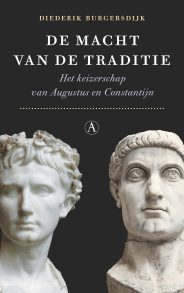
De macht van de traditie. Het keizerschap van Augustus en Constantijn
In De macht van de traditie Diederik Burgersdijk treats the way in which Constantine the Great based his revolutionary emperorship on that of the first emperor of the Roman empire, Augustus. His patron Apollo, god of light, served as a example for other patron-gods, such as Aurelianus’ Sol, the eastern god of Sun, and eventually also for Constantine’s own Christ, the monarch of peace who was born under Augustus’ reign.
Constantine’s reigning period was dominated by two opposed forces: the support for the traditional classical pantheon and ascending Christianity. Constantine hesitated, but eventually chose well-convinced for the god who would far outflank his competitors. In describing this historical process, the author uses sources that have been hitherto undisclosed for the Dutch audience, which include the speeches directed to the christian emperor by pagan orators. This results in a clear image of the decisive forces that made Christianity triumph over paganism.
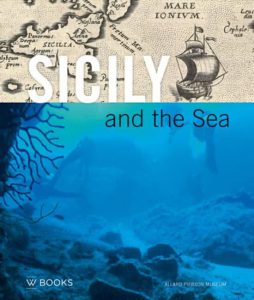
Sicily. Island of myths and monsters, meeting place of cultures, hub of naval trade routes, source of artistic inspiration and of great material wealth, and much-coveted strategic location in the Mediterranean. Phoenician and Greek colonists were the first outsiders to settle on Sicily and enjoy the riches that the sea and the fertile soil brought them.
They were followed by a bewildering variety of invaders over the ages: from Romans and Byzantines through Arabs and various European dynasties up to the Allies during the Second World War. All these cultures – sometimes living in peace, sometimes at war, always influencing each other – left their traces on the island itself and in the sea surrounding it. Inspired by Sicily’s archaeological and cultural treasures, this book offers an overview – or perhaps rather an anthology, since a complete survey, if at all possible, would soon become stifling – of the island’s history and culture, paying attention not only to ancient and medieval shipwrecks, battles, economy and art, but also to typically Sicilian traditions (from folk-tales and tuna fishing to mafia fighters), modern politics, and the poets, novelists and film makers who lived on Sicily or were inspired by its unique character.
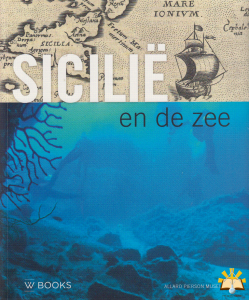
Without a sea no Sicily, that is the premise of this extensive, beautifully designed book: Sicilië en de Zee. In collaboration with the Allard Pierson Museum, writers from inside the country and from abroad write about the love relationship between Sicily and the sea.
It began with the Phoenicians and the Greeks, later the Romans and the Byzantines arrived. Sicily is an island of sometimes peaceful and sometimes violently colliding cultures, whose influences on each other have left traces in the sea. Harbors, temples and shipwrecks – the sea remembers everything. Modern technologies bring all these archaeological treasures literally above water. But Sicilië en de Zee also attends to homeric monsters, folk stories, modern politics, writers and film directors who inspired the island, and Michiel de Ruyter, who died in Sicily. This interdisciplinary approach provides a reading experience that is both entertaining and educational. Sicilië en de Zee is a varied and spherical book that you will want to dive into again and again.

Alexander en Darius. De Macedoniër in de spiegel van het Nabije Oosten
Alexander of Macedonia, the renowned conqueror of the Persian Empire, left, after his premature death in Babylon in 323 BC, both East and West behind in lasting fascination. The image of the ruler serves as a test of time and culture: from his death up to modern times, from India to Iceland, every period and each region has its own Alexander and appreciates his heritage in its own way. As far as the historical figure and workings of Alexander go, in more recent research the emphasis lies heavily on the Persian perspective: without the magnificent infrastructure and logistic apparatus of the Persian Empire, Alexander would never have conquered the great space of For-Asia and would never have acquired his renowned status. Moreover, he was not the only actor on the world stage: his opponent, Darius III, deserves more attention than has been given to him so far. In this way, we can understand Alexander in a broader and more interesting perspective. The ‘Oriental’ Alexander, however, is in fact not a new phenomenon: in his legendary or even mythical form, Alexander has always been a character surrounded by motifs and themes rooted in both Greek and Babylonian, as well as Egyptian and Persian imagination. This Alexander is also timeless and, perhaps even more than his historical pendant, exemplary in the most literal sense
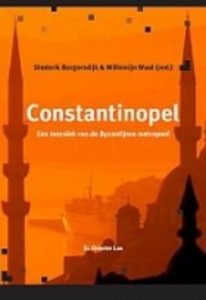

Diederik Burgersdijk analysed stylistic and structural aspects of the Historia Augusta, a late-ancient collection of Roman imperial biographies, in which the emperors reigning from Hadrian to Diocletian, 117-284 AD, are described. From his study significant differences are apparent between the different parts of the work, which points to the use of different source material and to a creation of the work in multiple editors. This is an important supplement to the revolutionary thesis of Dessau in 1889 that the Historia Augusta wasn’t written by six different authors, as the names of the authors who accompanied the books have suggested for centuries.
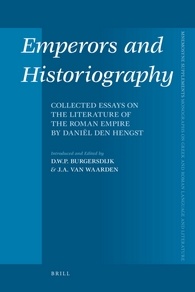
Emperors and Historiography. Collected Essays on the Literature of the Roman Empire by Daniël den Hengst
In this collection of essays Roman historical and biographical texts are studied from a literary point of view. The main interest of the author, Daniël den Hengst, professor emeritus of Latin at the University of Amsterdam, concerns the development of Roman historiography, the ways in which Roman historians present their work and the intertextual relations between these works and other literary genres. Special attention is given to the Historia Augusta and Ammianus Marcellinus, but also authors from the classical period, such as Cicero, Livy and Suetonius and their ideas about historiography are discussed. The articles demonstrate that a detailed interpretation of these texts in the original language is indispensable to understanding the aims and methods of ancient historians and biographers.
Introduced and edited by D.W.P. Burgersdijk and J.A. van Waarden.
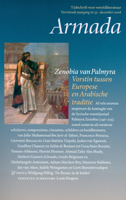
Armada 53 - Zenobia van Palmyra. Vorstin tussen Europese en Arabische traditie
This issue from Armada is dedicated to the intriguing queen of the Syrian desert city of Palmyra, Zenobia (240-274), who, following her idol Cleopatra, took up arms against the Roman emperor. For centuries she has been inspiring to writers, composers, cineasts, painters en sculptors, from al-Tabari, Francesco Petrarca, Giovanni Boccaccio, Gian Battista Tiepolo and Geoffrey Chaucer to Gustave Flaubert, Gioachino Rossini, Harriet Hosmer and Gerti Bierenbroodspot. This edition will be re-issued in 2018.
